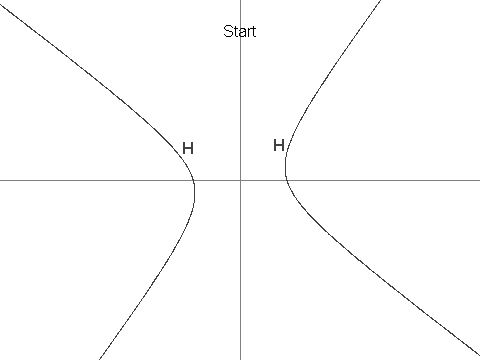1.8 KiB
1.8 KiB
id, title, challengeType, forumTopicId, dashedName
| id | title | challengeType | forumTopicId | dashedName |
|---|---|---|---|---|
| 5900f5131000cf542c510025 | Problem 422: Sequence of points on a hyperbola | 5 | 302092 | problem-422-sequence-of-points-on-a-hyperbola |
--description--
Let H be the hyperbola defined by the equation 12x^2 + 7xy - 12y^2 = 625.
Next, define X as the point (7, 1). It can be seen that X is in H.
Now we define a sequence of points in H, \\{P_i : i ≥ 1\\}, as:
P_1 = (13, \frac{61}{4}).P_2 = (\frac{-43}{6}, -4).- For
i > 2,P_iis the unique point inHthat is different fromP_{i - 1}and such that lineP_iP_{i - 1}is parallel to lineP_{i - 2}X. It can be shown thatP_iis well-defined, and that its coordinates are always rational.

You are given that P_3 = (\frac{-19}{2}, \frac{-229}{24}), P_4 = (\frac{1267}{144}, \frac{-37}{12}) and P_7 = (\frac{17\\,194\\,218\\,091}{143\\,327\\,232}, \frac{274\\,748\\,766\\,781}{1\\,719\\,926\\,784}).
Find P_n for n = {11}^{14} in the following format: If P_n = (\frac{a}{b}, \frac{c}{d}) where the fractions are in lowest terms and the denominators are positive, then the answer is (a + b + c + d)\bmod 1\\,000\\,000\\,007.
For n = 7, the answer would have been: 806\\,236\\,837.
--hints--
sequenceOfPointsOnHyperbola() should return 92060460.
assert.strictEqual(sequenceOfPointsOnHyperbola(), 92060460);
--seed--
--seed-contents--
function sequenceOfPointsOnHyperbola() {
return true;
}
sequenceOfPointsOnHyperbola();
--solutions--
// solution required